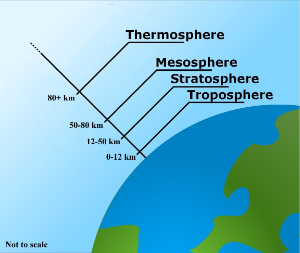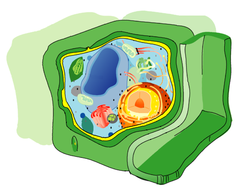Biological Walls
Atmosphere
Without the wall of the atmosphere life would not exist as we know it. The wall of the atmosphere, usually called, surrounds the earth and is held close to the earth by gravity. By volume, the wall of air contains 78.09% nitrogen, 20.95% oxygen, 0.93% argon, 0.04% carbon dioxide, and small amounts of other gases. The wall protects life on Earth by warming the surface through heat retention (greenhouse effect), and absorbing ultraviolet solar radiation.
see atmosphere wikipedia
Ozone Wall
The ozone wall or more commonly called the ozone layer is made up of a trioxygen inorganic compound O3. Ozone exists at ground level and is toxic higher concentrations and can cause asthmatic symptoms when inhaled. The ozone wall is located approximately 12 to 19 miles above the earth at a concentration of about 10 parts per million (ppm). The thickness varies by season and geography. The ozone wall absorbs 97 to 99 percent of the Sun's medium-frequency ultraviolet light, which otherwise would potentially damage exposed life forms near the surface including humans. The ozone layer was discovered in 1913 by the French physicists Charles Fabry and Henri Buisson. In the 1970s a fall in the general ozone level of 4% and then the subsequent discovery of even greater declines in the ozone levels at the poles, hence called the ozone holes or holes in the ozone wall. The holes in the wall were caused by the excessive use of foam-blowing agents (chlorofluorocarbon (CFCs), HCFCs, freons, halons).mr.yuk
Cell Walls
Cells walls are outer structure that surround cell membranes (an inner wall). Cells walls are common in plants and are present in most prokaryotes but not in eukaryotes. We are very familiar with the cell walls of wood. They provide the cell with both structural support and protection, and also acts as a filtering mechanism.
see cell walls wikipedia
Cell Membranes
The cell membrane is a biological membrane that separates the interior of all cells from the outside environment. The cell membrane is selectively permeable to ions and organic molecules and controls the movement of substances in and out of cells. The basic function of the cell membrane is to protect the cell from its surroundings. It consists of the phospholipid bilayer with embedded proteins.
from wikipeida





